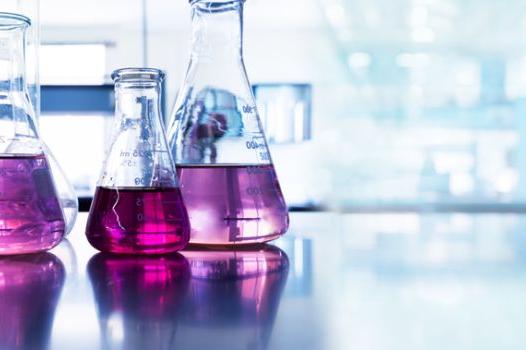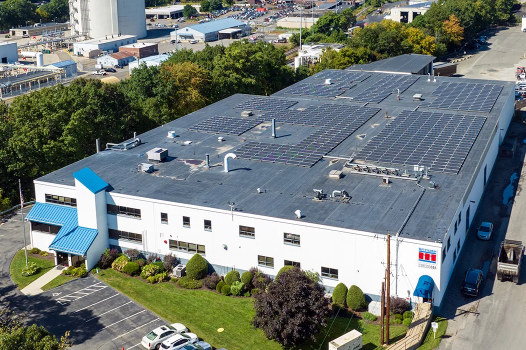Better results. Less chemistry.™
Bob's Brain: Future-Proofing Your Wastewater System
Blog

So when we look at manufacturing industries across the board, a lot of people plan for expansion and production, such as adding new lines increasing production hours, and that puts an extra strain on their wastewater systems. We want to future-proof our wastewater systems so that when we do those manufacturing increases, we don’t have to worry later down the line about if our wastewater system can safely handle that increase in volume.
Why should manufacturers be looking at future-proofing their systems?
A manufacturing plant never plans on decreasing its volume, but unfortunately, sometimes it does happen, so we have to prepare for that as well if we see that as a trend. But for the most part, people plan on expansion; they plan on growing their business and growing their production activities, so we just want to help businesses and manufacturers understand that there is a thought process that needs to be associated with wastewater systems. A lot of times, we’ll see a manufacturer build a brand new facility, or add a plating line, and not include wastewater at all, which can trigger a whole different set of problems.
What does a manufacturer need to look at to ensure their wastewater is prepared for expansion?
When you look at the volume of wastewater that you’re going to be running through your wastewater system, you want to make sure that your tanks are sized appropriately and that you have enough storage to hold a minimum of four hours’ run time. A lot of people try to go for a 24 hour run time; if possible, it is not always possible; some plants manufacture a lot more wastewater than others. But you want holding capabilities; you want your tanks to be large enough to have a dwell time of at least 15 minutes in each tank that is actually processing the wastewater — not your holding tanks, but your pH adjustment tanks, your chemical addition tanks, and your flocculation tanks. You want at least 15 minutes, so you need to make sure your tanks are sized appropriately for that, and you want to make sure that your pumps are large enough to handle the transfers. And if your tanks gravity feed into each other, make sure that that the increase in flow want won’t flood those tanks, that the gravity feed connections are adequate enough to handle an increased inflow. You want to make sure that your chemical feed pumps are properly sized so that you can dial up your chemistry or dial down your chemistry as needed. You also want to make sure that they’re not oversized because if they’re oversized, you might not be able to dial down if you need to on your slower shifts. You will also want to make sure that your dewatering equipment — whether it’s a vacuum drum filter or plate and frame filter press — is adequately sized to handle the number of solids that you’ll produce.
How does hydroxide precipitation work?
Most of the metal finishing world uses hydroxide precipitation as a way to remove their metals. Hydroxide precipitation is simply when you add sodium-potassium, hydroxide calcium, or hydroxide, really any form of hydroxide, to adjust your pH up. The hydroxide forms bonds with the metals and removes them from your wastewater in the form of metal salts, and that’s where your solids are generated from. There is actually a hydroxide solubility curve chart that if there is no chelation present — or very minimal chelation present — in your wastewater system, you can use that curve chart as kind of a guide to where you need to target your pH to remove the metals that you have in your system.
Are there other ways to remove metals than precipitation?
A lot of what we hear now is things like electrocoagulation, which isn’t very well known in the metal finishing world. Electrocoagulation is not electrowinning; it is a different process, but it allows you to overcome your chelation factors. I have seen it used in places where accelerated mass finishing, which is a chelation heavy process, is comingled with the plating rinses. It allows for metal removal even with the chelation present. Electrocoagulation is a totally physical way of removing your metal contaminants; you can do ion exchange in some cases, and there’s also what’s known as sulfide precipitation, where you use a sulfide instead of a hydroxide to adjust your pH, and you can use those at a much lower pH than the hydroxide solubility works. There are a lot of different ways to remove metals.
How can a manufacturer ensure they are using the right chemistry for their wastewater system?
Routinely you do what we call a ‘system welfare check,’ where you want to get some of your wastewater prior to any treatment being done to it, and you want a bench test using what your current chemistry is and the dosing that you’re currently dosing at to see what you’re removing. Before bench testing, you want to see what you actually have in your wastewater. Has it changed over the years? Have you added a new line that put a new contaminant in there that wasn’t in there before? It is so that you can gauge your metal removal efficiencies; if you’re hitting above 90% metal removal, and you’re doing really well, and your chemical usage is low, then you’re on the right treatment program. But say your chemical usage has crept up over the years, you’re now at 10-15 mils per gallon to treat with your coagulant; it might be time to bring in a different form of coagulation. In our industry, there are four types of coagulates: there’s iron-based, aluminum-based, calcium-based, and a new one on the market is rare-earth-based coagulate. So compare them see which one works better.
Read More: Download the interview PDF




